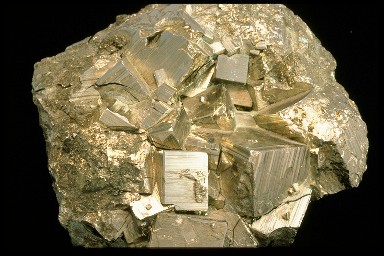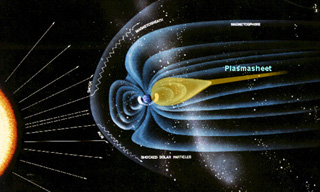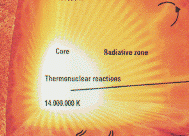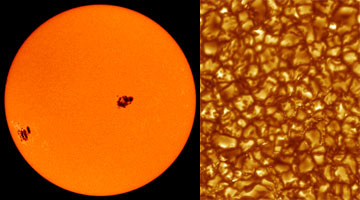Plasma: the negatively charged electrons (yellow) are freely
streaming through the positively charged ions (blue).
General Atomics
The Plasma State
Plasma is known as the fourth state of matter. The other three states are solid, liquid and gas.
Almost everything is made up of atoms (your dog, your science book, this computer...). The atom has a nucleus which has a positive charge. Electrons orbit the nucleus. The electrons (which have a negative charge) are attracted to the nucleus. Remember, opposites attract! But sometimes something comes along that sets the electrons free from orbiting the nucleus. Really hot temperatures can do this! When electrons are no longer trapped in orbits around the nucleus, we have the plasma state.
Most of the matter in the universe is found in the plasma state. That is because stars contain so much of the matter in the universe (stars are so hot that their matter can only exist in the plasma state).
You might also be interested in:

Solid is one of the four common states of matter. The three others are gas, liquid, and plasma. There are also some other exotic states of matter that have been discovered in recent years. Unlike liquids
...more
The plasma sheet is just that, a sheet of plasma. It is much thicker than a sheet of paper though! In fact, it is much thicker than the distance through the middle of the Earth!
...more
You may have heard your teacher talk about the 4 states of matter. Do you remember what they are? Solids (like your desk), liquids (like the milk you pour in your cereal), gases (like the air you blow
...more
The center of the Sun is called the core. The core is made up of a really hot gas (in the plasma state). The temperature in the core is 15 million kelvins ! That's REALLY HOT! The core is where the energy
...more
Most of the energy we receive from the Sun is the visible (white) light emitted from the photosphere. The photosphere is one of the coolest regions of the Sun (6000 K), so only a small fraction (0.1%)
...more
The gas in the solar corona is at very high temperatures (typically 1-2 million kelvins in most regions) so it is almost completely in a plasma state (made up of charged particles, mostly protons and electrons).
...more
Motions within Earth's metallic core generate the planet's global magnetic field. This magnetic field extends beyond Earth's surface and atmosphere into the space surrounding our home planet. The interaction
...more















